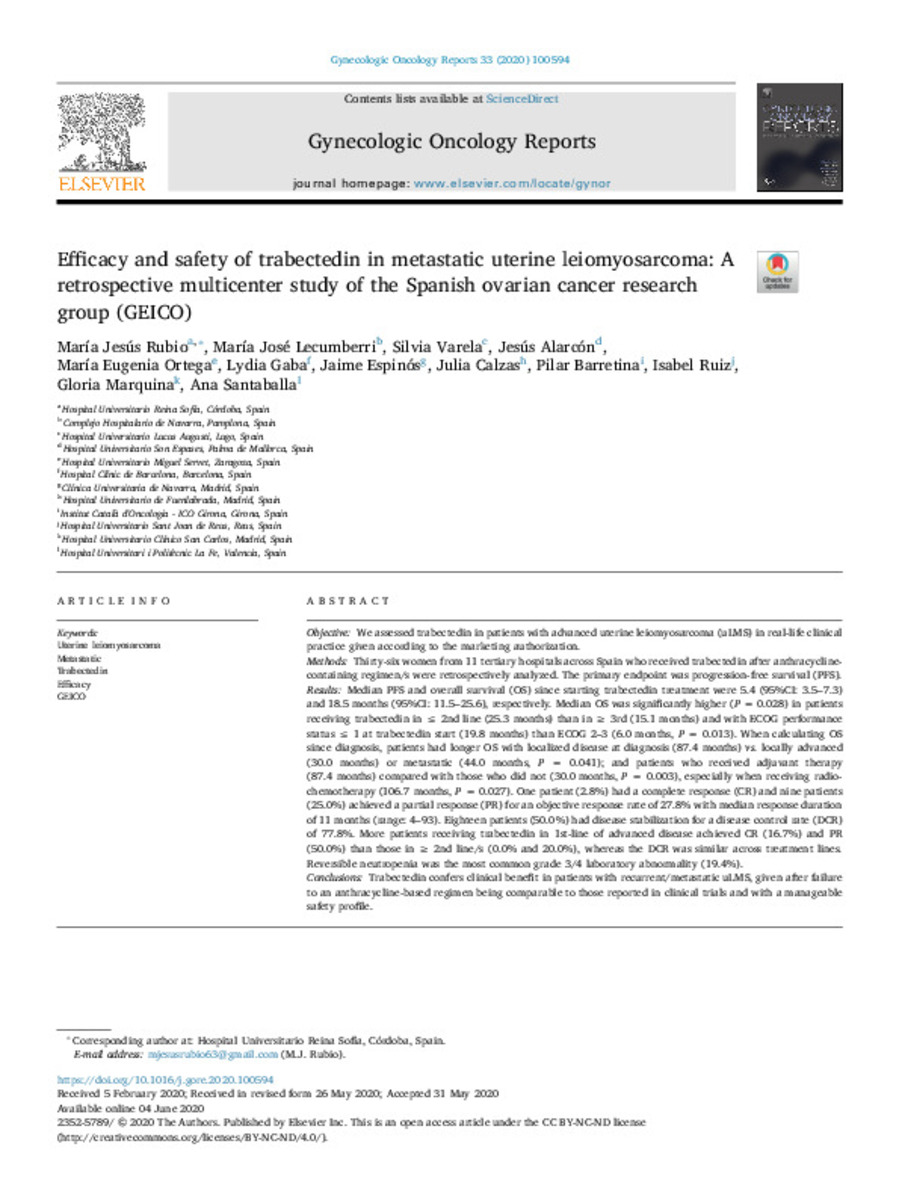Efficacy and safety of trabectedin in metastatic uterine leiomyosarcoma: A retrospective multicenter study of the Spanish ovarian cancer research group (GEICO)
Keywords:
Uterine leiomyosarcoma
Metastatic
Trabectedin
Efficacy
GEICO
Note:
This is an open access article under the CC BY-NC-ND license
(http://creativecommons.org/licenses/BY-NC-ND/4.0/).
Citation:
Rubio, M.J. (María Jesús); Lecumberri, M.J. (María José); Varela, S. (Silvia); et al. "Efficacy and safety of trabectedin in metastatic uterine leiomyosarcoma: A retrospective multicenter study of the Spanish ovarian cancer research group (GEICO)". Gynecologic Oncology Reports. 33 (100594), 2020,
Statistics and impact
0 citas en

0 citas en

Items in Dadun are protected by copyright, with all rights reserved, unless otherwise indicated.







